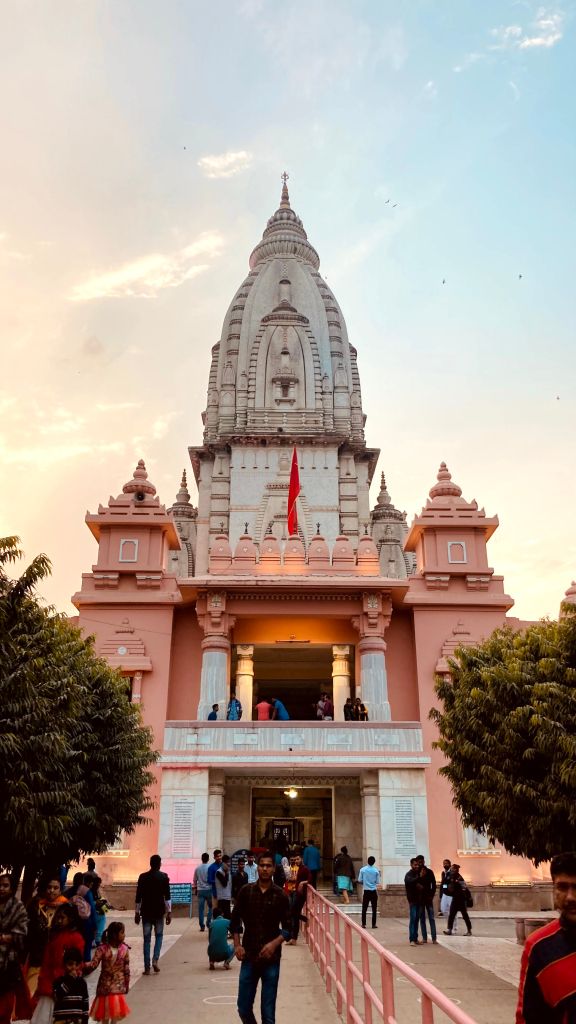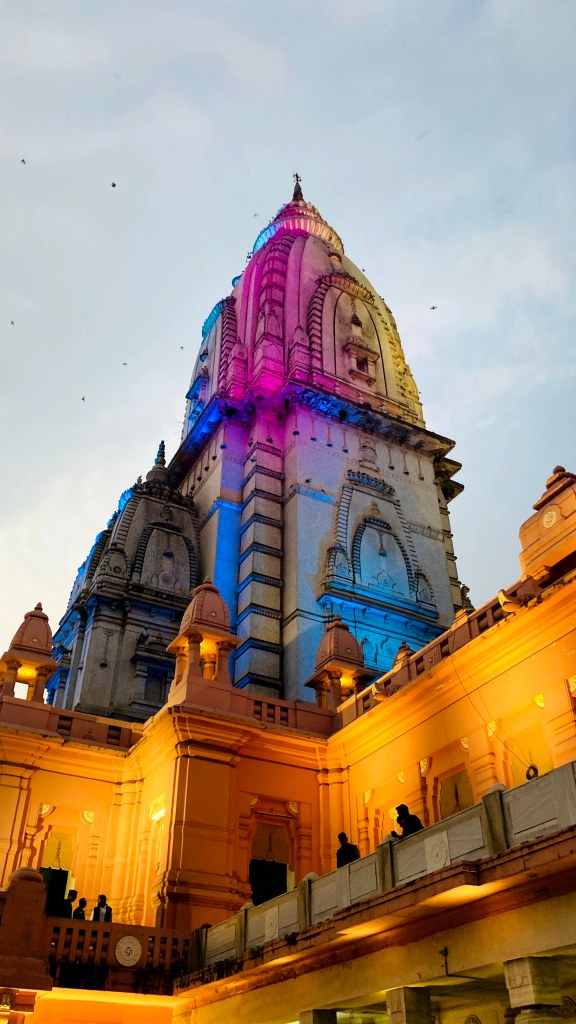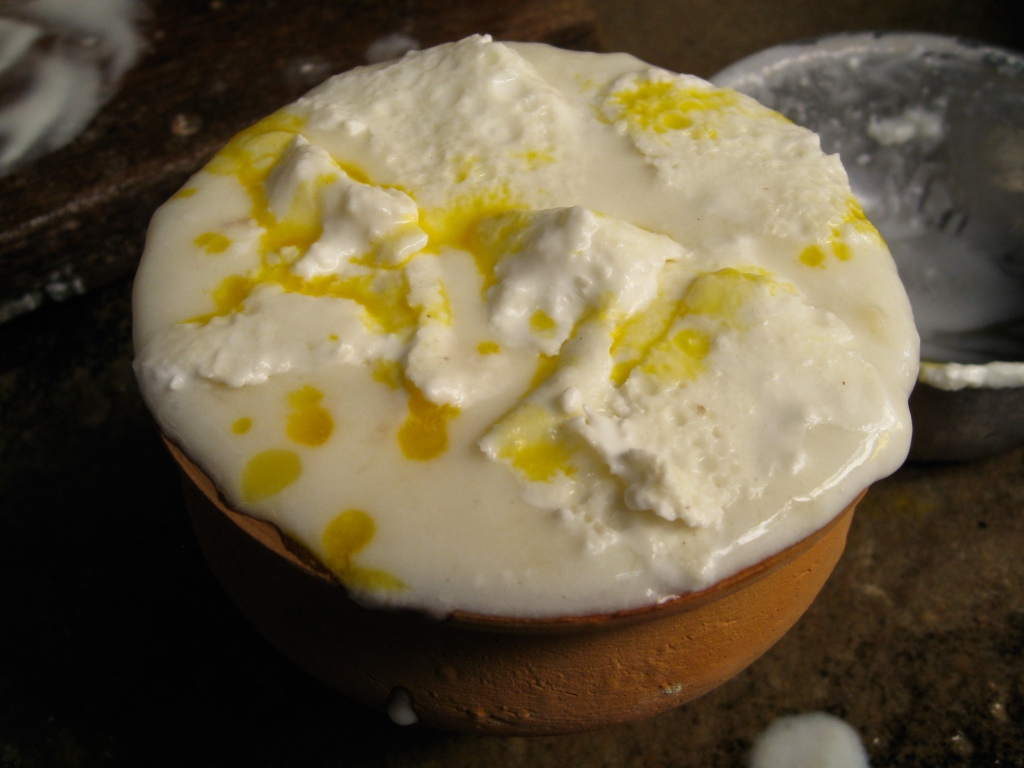Few places in India are capable of being recognised for more than just a few highlights. Against the obvious, Banaras is not only a significant religious place, but also abundant in a multitude of motifs – the street food is delectable, strolls in the crowded and cramped streets have an eerie charisma, and dusks on the other side of the Ganges provide unscathed views of the city drenched in orange; early next morning, Banaras wakes up by offering prayers to the holy river as the sun ascends on the horizon across the Ghats! Since time immemorial, this city has wooed commoners and caliphs, historians and wayfarers, pilgrims and bohemians alike. After spending a couple days in this remarkable city, I was its latest casualty, quite happily!
From a religious point of view, Banaras is recognised globally. It is one of the most ancient civilisations in the world – a place which has witnessed diverse habitation from archaic times. It evokes sentiments of the timeless, the universal and the cosmic. A confluence of culture and art, this land has been called home by the likes of Kabir, Buddha, Jain Tirthankars and Tulsi. Contemporary historians and musicians such as Rai Krishnadasa, Gopal Mishra, Omkarnath Thakur and Bismillah Khan have kept this city relevant in the spheres of fine arts. ‘Kashi Vishwanath Ki Nagri’, as Varanasi is commonly known – it is a city that was ruled by many kings in the past. Banaras has a surreal amalgamation of a religious and rich past and a contemporary present. It has been that way for millenniums; hence, it has aptly got the stature of being the ‘Oldest City of India’.
Banaras is a place where knowledge, heritage, and culture of the past and present are conflated!

The temples of Banaras
Banaras is home to many magnanimous Hindu temples as well as the surreal statue of Buddha at Sarnath, which also happens to be the tallest of its kind in the country. This city is home to a multitude of ghats, an array of shrines and temples, and various other beautiful palaces. Along with exploring the several ghats, what I remember in particular is exploring the enticing temples in the city.
Kashi Vishwanath Temple
The Kashi Vishwanath temple is one of the holiest Shiva Temple of the city. As the name suggests it is a temple on the name of Lord Shiva who is the presiding deity of this temple. Thus Kashi is also known as the city of Lord Shiva. The temple houses a “Shivalinga” – (an abstract or an iconic representation of the Hindu deity Shiva in Shaivism) which is said to be amongst one of the 12 Jyotirlingas of Shiva. The temple has been demolished and reconstructed several times by multiple kings and rulers of the country and has an extremely rich history.

The temple is located on the banks on the Ganges. Outside the temple, on the side of it facing the river, one can see many sadhus staring into the infinity; and don’t be fooled by their looks, they indeed know the ‘What’s and ‘Why’s of this city! When I asked one of them why does this temple, in particular, is considered so important, he answered, and I paraphrase:
It is believed that Banaras is a place where the first Jyotirlinga manifested itself. Kashi is believed to be at the center of the Hindu doctrine of cosmogony. If Kashi is at the heart of Hinduism, then Kashi Vishwanath Temple is the heartbeat of this godly land!’
This temple is referred to as Varanasi’s very own ‘golden temple’, thanks to the thousand-kilogram gold donated by Maharaj Ranjit Singh, which is used in constructing the dome of the temple. This is a place where different people across the country (and even many people coming from other countries) all patiently stand in the line for hours together just to make sure that they, along with their elder relatives and acquaintances, get to worship the shrine. This temple is believed to possess powers of salvation – a mukti from the cycle of birth and death. Worshippers have a staunch belief that in here, Lord Shiva gives the ultimate ‘Tarak Mantra’ to the ones who are in their last few days of life, due to which they achieve a stage of salvation.
Needless to say, the temple is crowded – being one of the most holy places in perhaps, the holiest city in the country. So, it is recommended to get here either early in the day, or sometime later in the afternoon.
Birla Temple

Since the temple was founded by the Raja Birla of the Birla family of great industrialists in the vicinity of Banaras Hindu University, it is given the name of Birla temple. Planned by Pt. Madan Mohan Malaviya (the founder of the Banaras Hindu University) as part of the BHU campus is a circle of nine temples dedicated to different deities. The Temple is open to all the people irrespective of many castes and religions. It is beautifully lit up in the evening, located amidst the open meadows of the Banaras Hindu University. The temple tower rises more than 200 feet above the ground, and is a sight to behold! It must be noted that amidst the old and rusty charisma of the city, this temple is a relatively newly built one, and stands out from all others temples in the city!

Being dedicated to Lord Shiva, this temple is an exact copy of the original Vishwanath Temple. The center of the temple has a Shiva lingam – the idol of Lord Shiva and the walls of the temple have inscriptions of the Hindu scriptures. Being a matchless and ostentatious temple in the entire Varanasi, the tower of the temple is known as the tallest temple tower which is taller than the Qutub Minar.

Sankat Mochan Temple
This temple is dedicated to the all-powerful Lord Hanuman, and is frequented by devotees who can be seen chanting verses related to the lord, praying to him to save them from all troubles. The temple is located along River Assi and was constructed in the early 19th century under the initiative of the famous freedom fighter and educationist, Madan Mohan Malaviya. The main idol is embellished beautifully with marigold flowers and lip-smacking besan ke ladoos are a special Prasad here. The temple is visited by thousands of devotees every Tuesday and Saturday and one can see devotees feeding the monkeys who live here, which is considered auspicious.

Apart from these, there are many temples in Banaras that are worth visiting. The Kanaka Durga Mandir, Annapurna Devi Mandir, Kal Bhairav Mandir and Durga Kund Mandir are just a few to name. In fact, this city is home to more than 2800 temples spread across the city, far and wide. Every one of these temples tells a story – a tale comprising incidents and creatures, both mythical and real, over thousands of years. Few temples are located along the Ganges, others are more internal in the city, amidst the hustle and bustle of settlements.
Kathwala Temple

Amongst all temples I saw, perhaps, my favorite was the Kathwala Temple, also known as the Nepali Temple. Situated along the holy river on the Lalita ghat, it’s a place visited by few. The story of the Nepali Temple is interesting and takes us back to the time of 19th century. As the name suggests, it is built in Nepali style of architecture and is one of the oldest Shiva temple in the city. Once Rana Bahadur Shah, the King of Nepal took refuge in Varanasi. It was he who decided to build a Shiva Temple here which resembles the Pashupathinatha Temple in Kathmandu. Though the construction of this temple began during his exile, it took almost 30 years to get completed. The King Rana Bahadur Shah went back to Nepal during the construction stages, and he was stabbed to death immediately after his return. Later, his son Girvan Yuddha Bikram Shah Dev completed the temple.
The Kathwala temple is usually less occupied, despite being a couple hundred yards from the constantly crowded Manikarnika ghat. Even though the whole structure is made primarily from wood, this temple has stood the test of time. Indeed, it is one of Varanasi’s most peaceful, awe-inspiring, and admirable places I have been to! I had visited this temple quite earlier in the day, spent quite some time in it and came out walking towards Ganges while the Sun was just rising over the horizon; and while I was just passing over the Lalita Ghat, the city of Varanasi, I thought, was taking shape right in front of my eyes. The lines written by Kedarnath Singh perfectly describe the vibe referring to the Tulsighat:
Have you ever seen spring descending on empty bowls? That is how the city opens - fills up and empties day after day. Its shoulders carry the weight of an eternal corpse through its dark and winding streets toward the shimmering Ganges. The slowness, the rhythm bind the city; for hundreds of years nothing falls off - nothing shakes and nothing moves. The Ganges remains, the boat stays tied to a spot and for hundreds of years, at the same place the sabot of Tulsidas remains.
The city, regardless of the time of the day, is simply magnificent. The temples, the river, the ghats, they all play a role in making Banaras what it is. But Banaras is more than a city, it’s a vibe.
The food
Tradition and culture are things which aren’t limited to structures of devotion alone. They are reflected in every aspect of the city. The way the people dress, the way they work, they way they talk, cook and eat! Banaras is one of the best-known cities in India when it comes to food. The cuisine of Varanasi is majorly influenced by the nearby states like Bihar and West Bengal. Any trip to this holy city is incomplete without trying some lip smacking delicacies served here. You will mainly find the vegetarian cuisine prepared in desi ghee but there are few options for non-vegetarians as well. From snacks to main courses to desserts, the streets of Varanasi are filled with numerous shops serving delicious food. The Varanasi cuisine is a perfect blend of old traditional taste with a touch of newness and modernity. How much ever one may prefer the spaciousness and ambience of luxury restaurants, nothing can beat the mouthwatering street food of Varanasi offered in the narrow streets of this vibrant city.

The first thing I used to do while visiting temples and ghats is to have hot and crispy kachoris with spicy aloo sabzi. This combination is the most popular breakfast option in the city. With numerous shops preparing this delicacy in their own way, the most common types of kachoris are the badi kachori stuffed with dal ki pithi and choti kachori filled with a potato mixture. These kachoris are served with a bowl of aloo ki sabzi or aloo curry which makes it a drool worthy combination. The other dish one may try while exploring the city is the Chena dahi vada, which is a delight for all curd lovers with its perfectly balanced sweet and sour taste. Chena dahi vada is a variation of the regular dahi vadas and resembles rasmalai in appearance. The dish is prepared by dipping the vadas in the yogurt and adding a pinch of salt and jeera on the top. It is garnished with coriander leaves that adds a refreshing flavour to it.

If kachoris and dahi vadas don’t sound all that inetersting to you, here’s something that will surely treat your tongues. All of you must have heard about aloo Chaat but the streets of Varanasi have something unusual and delicious to offer – the Tamatar Chaat (Tomato chaat). This Chaat is prepared by mixing boiled tomatoes, mashed potatoes, onions, green chillies and coriander leaves. Spices like garam masala, red chilli powder and black pepper are added to this mixture. Beware though, as this dish is more on the spicier side. Tamatar Chaat is served in a bowl made from palash leaves, also called as dona. This special dish is unique to Varanasi and everyone must try this at least once in their lifetime.

And finally, after the zesty concoction of spices and flavours, nothing works better than Banarasi lassi and thandai! The thandai is commonly known is famous across the city for their refreshing taste and great flavors. It is prepared from seasonal fruit puree with the rich flavor of fennel seeds, cardamon, pepper and saffron. It is served in a kulhad or a clay cup and is topped with rabri, dry fruits and nuts. Lassi is another refreshing and drool-worthy drink that you can enjoy while exploring Varanasi. Banarasi Lassi is very different from Punjabi lassi. While Punjabi lassi is a frothy drink with a blob of fresh white butter floating on top, banarasi lassi is more like a dessert drink – Thick and sweetened with a topping of malai on top and a generous blob of rabdi over it. How much more sinful it could get? The mithai loving people of Banaras have reinterpreted the lassi for sure.

To sum it all, this is a place which packs a promising experience. Banaras is not any one thing – it is its crowd, its chaos, its culture. It is an exotic combination of blitz and lull, of colour and sombre, of life and quietus. In Banaras, every temple, every ghat and every narrow street have something to fathom about. The narrow, crowded lanes are permeated by liveliness of paan vendors, workers, streetside shops, innumerable devotees, cattle, tourists, sages, bikes, bicycles and the lost souls that seek happiness in the chaos.

The mellowing brickwork in the byways have witnessed countless scorching summers and nail-biting winters, but in all their pizazz, they still echo the clangs of bells during the morning and evening aartis. While countless devotees line up in front of the temple, you will often find a few trailblazing souls just siting by the Ganges or taking a stroll in the narrow pathways. After all, this city provides salvation not only to cadavers, but also to those who wish to savour the emancipation that is Banaras!


Leave a comment